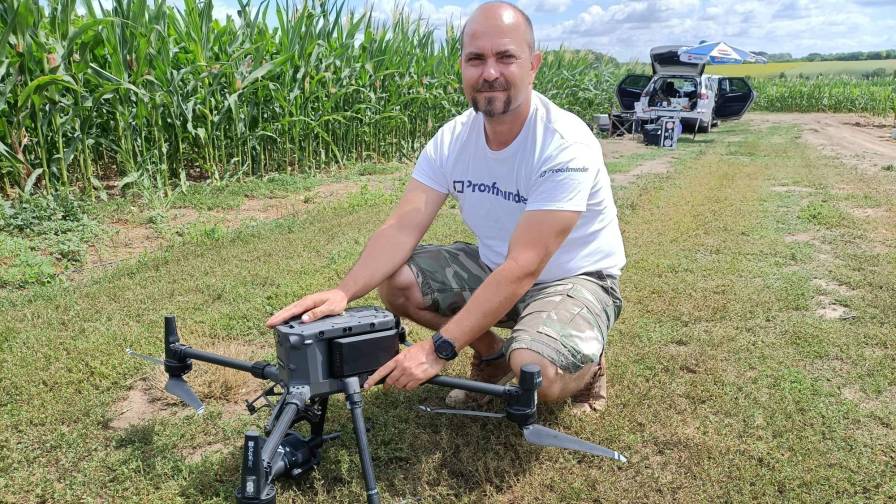10 Key Takeaways From the 2019 PrecisionAg VISION Conference
I recently attended the PrecisionAg VISION Conference in Seattle. The event offers attendees a clear look at the changes that are likely to transform their businesses in the next 3-5 years. About 200 people attended the conference, including many from the Western U.S. According to PrecisionAg, more than 135 organizations were represented at the conference. Participants were mostly founders or directors of strategic positions of these companies, which were from diverse segments of agriculture. Universities researchers and representatives of farmer associations were also present. One of the main attractions of the event, pointed out by participants, is the networking opportunity. Here are my key takeaways:
1. Microsoft Immersing Itself in Digital Farming
Microsoft hosted a pre-conference summit titled IoT for Earth, which offered insight into the pending launch of the Microsoft platform for digital agriculture. Their solution will be released under the name FarmBeats and the purpose of the presentation was to arouse the interest of potential partners. According to the company, the platform seeks to make available Microsoft’s tools, especially the Azure platform, to partners who have expertise and experience in the agricultural market. Microsoft’s development team presented several technologies as possible building blocks of this platform. These include the development of protocols for data transmission between sensors using the unallocated spaces of the television frequencies. More details can be found on their website.
2. Specialty Crops Seeking Value in Precision Ag
The discussions in the main event began with a reflection on the adoption of precision agriculture in the U.S. It is generally accepted that about 60% of the area planted with row crops uses precision agriculture tools, mainly with the use of variable rate application. While there is no current survey of the use of precision agriculture in the production of specialty crops, it is estimated that only 10% to 20% of the area uses some tool, which has mainly been for irrigation monitoring and control. How to overcome the dilemma of value versus the scale of production was one of the points addressed. Although high-value crops provide a greater and more immediate return on investment in technology, lack of scale means that sometimes the farmers do not find it necessary to adopt new technologies and the industry prefers to focus on developing solutions that can be adopted on a large scale. The main success cases presented were obtained in situations of high value and large scale, such as in the production of grapes, apples, and lettuce.
3. Don’t Underestimate Social Aspects of Technology Acceptance
Another decisive point for the adoption of new technologies is acceptance by farmers — and by society. Growing opposition in many consumer markets to the introduction of transgenic foods and more recently to the use of gene-edited crops were used as examples. Demonstrations during the International Forum of Agricultural Robotics (FIRA) last year in France was the latest example. The event emphasizes the potential use of robots in agriculture, which are being interpreted by the general public as a threat to the employment of agricultural workers. They discussed the importance of communicating the benefits of new technologies and how they could be used to increase human capacity rather than replacing it. The same concern has been shown by consultants and representatives of farmer associations, since in the U.S. more than 80% of farmers rely on external consultants to assist in most agronomic decisions. Solutions that promise to use big data and machine learning to automate farmers decisions will not be well accepted, at least over the next five to 10 years. What the farmers are looking for are solutions simple to use and that present a significant and easily measurable return of investment.
MORE BY RODRIGO TREVISAN
Highlights from the 14th International Conference on Precision Agriculture
Data-Driven Strategies and Machine Learning Shaping the Future of Agriculture
4. Robotics in Agriculture Getting Closer to Reality
Speaking of the use of robots for labor replacement, especially in crops with more intensive management, the view of fruit growers is that there are many intermediate steps of optimization that have been neglected by the industry that could bring immediate returns. It is more important to gradually evolve with ag robotics than waiting for the perfect robot. This was one of the views repeated more often during the event. We need to solve the problems of today and not those that may exist by 2050. Solutions should seek to meet the majority of the audience and not just the early adopters. In general, companies that have their origin closer to agriculture already seem to have absorbed this concept and have worked to deliver these solutions to farmers, whereas purely digital technology companies that have entered the agricultural market in recent years still have views more distant of reality, based on futuristic dreams. There are, in fact, several examples of disruptive innovations achieved by companies outside the segment, so we cannot rule out the significance of these initiatives.
5. Financing the Future of Digital Farming
Also related to the innovation process, there was an important discussion about the need for resources to finance the development of new solutions. Venture capital companies, which are typically associated with financing the development of disruptive solutions, are characterized by the expectation of rapid and exponential return on invested capital. This model has often been predatory to the reality of agriculture, as the results of startups are often limited to the number of harvests per year, which in most cases is only one. In this scenario, the iterative process needed to improve the solution takes much longer than in other areas of the economy. Access to funding sources that are patient enough to wait for results can be one of the decisive factors for the company and technology’s success. The establishment of public-private partnerships and consortia of farmers and companies were identified as possible solutions to this dilemma.
6. Sharing the Risk of Technology Adoption
The flip side of this coin is the importance of the farmer as the agent of validation of technologies and often the one assuming most of the risks if the technology fails. Sharing the risk with the companies was considered an important facilitator of the adoption of new technologies by the farmers. One of the limitations for the implementation of business models in which the risk is shared is the difficulty of measuring the risk and any benefits or losses caused by the adoption of different technologies. As an example, contracting service providers to perform key operations such as planting and harvesting could be a cost-cutting strategy for farmers, since these operations require the immobilization of a large amount of capital in equipment that may be used during less than two weeks in a year. The problem is that all farmers in a region want to do these operations on almost the same date. There are no widely accepted ways of predicting what would be the yield loss if the planting date was delayed by X days. If these models were available, it would be possible to optimize the use of the machines while ensuring the farmer would be compensated in case of delay, building a relationship of trust. The same difficulty is also observed when we want to calculate the return on investment in any technology, solution, or product, since a fair comparison, under equivalent conditions, with and without the use of the new tool is often not possible due to the interactions with soil and weather.
7. Data Standardization a Must for Long-term Success
Considered as one of the obstacles in the development of digital agriculture solutions, the lack of standardization of the data generated by different sensors and equipment was also discussed. There are optimistic expectations about this, mainly due to global initiatives such as AgGateway and the development of API’s and format conversion tools. There is still a lot to be done, mainly by the companies that generate the data, but there seems to be a consensus of the need to prioritize initiatives in this direction and favor the adoption of a standard that meets most interests, avoiding that external standards are imposed.
8. High-Speed Connectivity Getting Closer, Challenges Remain
The other major problem with the collection of sensor and equipment data is transferring those from where measurements are made to the platforms. Although U.S. mobile operator maps show coverage of almost 100% of the territory, the reality observed in the fields is that most areas are not connected. There are government programs being implemented to help solve the problem of rural connectivity, prioritizing cities with less than 10,000 people and with population declining in recent years. Connectivity is being considered as one of the basic needs of the human being, as much as access to water and food, and promoting it is seen as one of the tools to contain the intense rural exodus that has been observed in the U.S. Despite the huge amount that will be invested in this in the coming years, the problem will continue to exist in the fields far away from the cities.
9. Challenges of Taking Food Safety and Traceability to the Next Level
One of the topics at the center of digital agriculture discussions in the specialty crops segments is the traceability and transparency of production. Farmers have been pressured by large food distribution networks that seek to meet the aspirations of an increasingly demanding consumer market. The process was intensified in the last year after the occurrence of food poisoning epidemics in several states linked to the same product with a common origin. Health and consumer protection agencies have strongly criticized the lack of traceability of products and suspended the licenses of all farmers in certain regions suspected of being the focus of contamination. This has forced farmers to seek monitoring tools to make production more transparent. The other bottlenecks faced by farmers in this segment are also related to changes in legislation and consumer pressure. The first is the availability and cost of labor, which was directly affected by the immigration policies imposed by the Trump government. The second is scarcity and tariffs on the use of water for irrigation, which is the basis of production in the irrigated valleys of the Western U.S.
10. It Still Comes Down to the Farmer
In general, the evolution of what has been defined as digital agriculture seems to be more related to external demands than motivated by farmers. This is one of the flags raised by those who are focusing on monitoring solutions, not directly related to in-season actions that can be made based on the data to change the outcome of the crop season. This seems to be contrasting with the way precision agriculture originally developed, which was motivated by farmers who sought to take advantage of spatial variability and the agricultural machinery industry that sought to offer more comfort and performance in their equipment. This may be an indication that many successful solutions in one place may not spark interest in others, especially those driven by quite different legislations.










